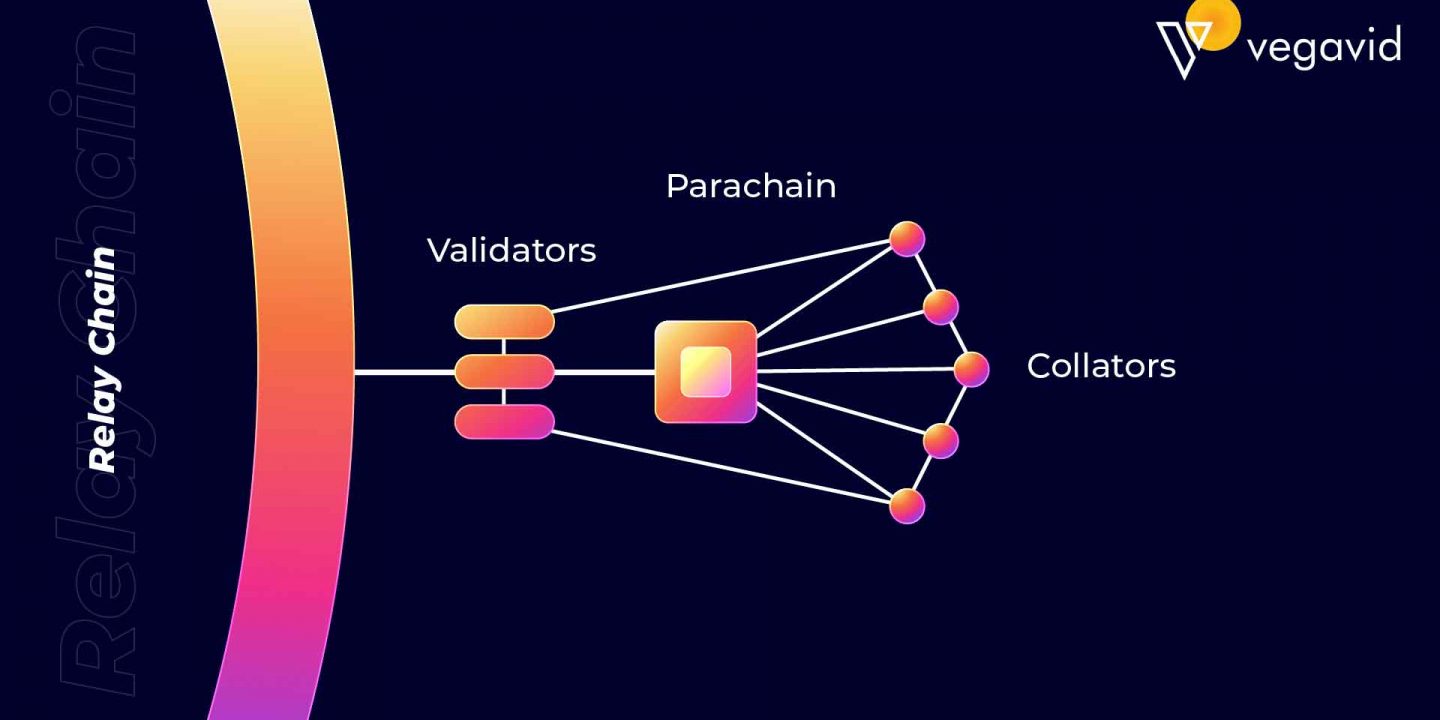
A parachain is a blockchain that is attached to the Polkadot relay chain. Parachains can share resources and communicate with each other through the relay chain, allowing them to operate in a mutually beneficial way. Polkadot’s relay chain is designed to be scalable, so that it can support a large number of parachains.
Parachains are able to offer a wide range of features and services, as they are not limited by the same constraints as traditional blockchains. For example, a parachain could offer high-speed transactions, or could be designed to be more private than a traditional blockchain.
The term “parachain” is a combination of the words “parallel” and “chain”, and refers to the fact that parachains can operate in parallel with each other. This is in contrast to traditional blockchains, which can only operate one at a time.
Polkadot’s parachain model is designed to allow a large number of blockchains to work together, in a way that is scalable and efficient. This could potentially revolutionize the way that blockchain technology is used, as it would allow for a much greater degree of collaboration and interoperability between different blockchains.
What is a Parachain?
A Parachain is a blockchain that is attached to the main blockchain, called a Relay Chain, in order to increase the scalability of the main blockchain. A Parachain can process transactions independently of the Relay Chain and can also communicate with other Parachains attached to the same Relay Chain.
What are the benefits of a Parachain?
The main benefit of a Parachain is increased scalability. By attaching multiple Parachains to a Relay Chain, the overall throughput of the Relay Chain can be increased. Additionally, Parachains can process transactions independently of the Relay Chain, which can further increase the scalability of the overall system.
What are the challenges of a Parachain?
The main challenge of a Parachain is the need for a Relay Chain to attach to. Without a Relay Chain, a Parachain is just a regular blockchain. Additionally, the scalability of a Parachain is limited by the scalability of the Relay Chain. If the Relay Chain is not scalable, then the Parachain will not be scalable.
What is the difference between a Parachain and a sidechain?
The main difference between a Parachain and a sidechain is that a Parachain is attached to a Relay Chain and a sidechain is not. Additionally, a Parachain can process transactions independently of the Relay Chain, while a sidechain cannot.
What is the difference between a Parachain and a shard?
The main difference between a Parachain and a shard is that a Parachain is a blockchain that is attached to a Relay Chain, while a shard is a portion of the Relay Chain itself. Additionally, a Parachain can process transactions independently of the Relay Chain, while a shard cannot.
What is the future of Parachain?
The future of Parachain is promising. With the help of the Polkadot relay chain, Parachains can offer increased scalability, security, and interoperability. Additionally, Parachains can be used to build specialized applications that might not be possible on other blockchain platforms.
Key Takeaways
Cryptocurrency parachains are a type of blockchain that is designed to be highly scalable and efficient. Parachains utilize a process called sharding, which allows them to process multiple transactions simultaneously. This makes them much faster and more efficient than traditional blockchains.
Parachains are also able to communicate with each other, which allows them to pool resources and create a more robust network. This makes them more resistant to attacks and allows them to process more transactions per second.
Cryptocurrency parachains are a promising solution to the scalability problem that has plagued the cryptocurrency industry for years. If they can live up to their potential, they could help to make cryptocurrency more widely adopted and used in the real world.











